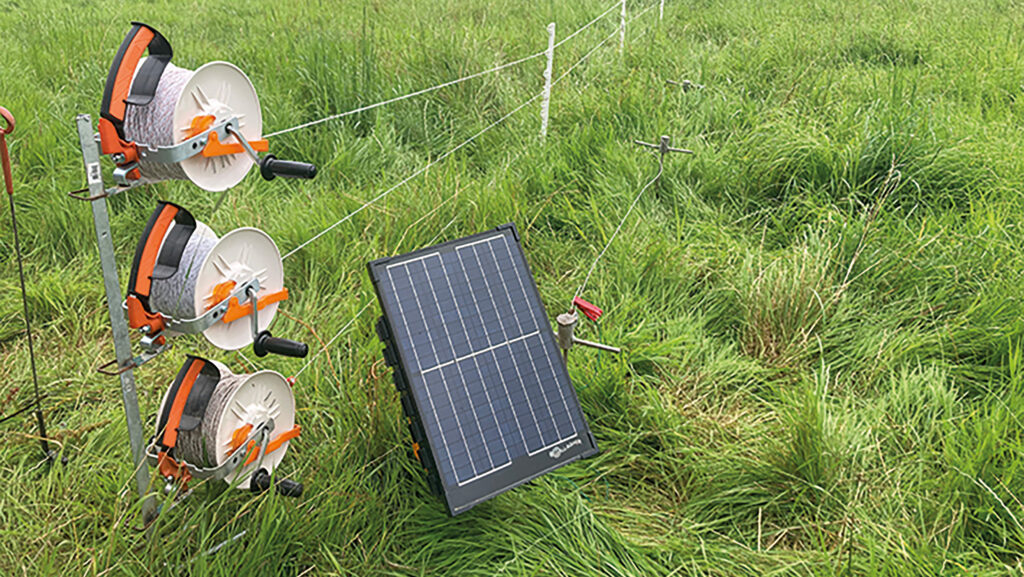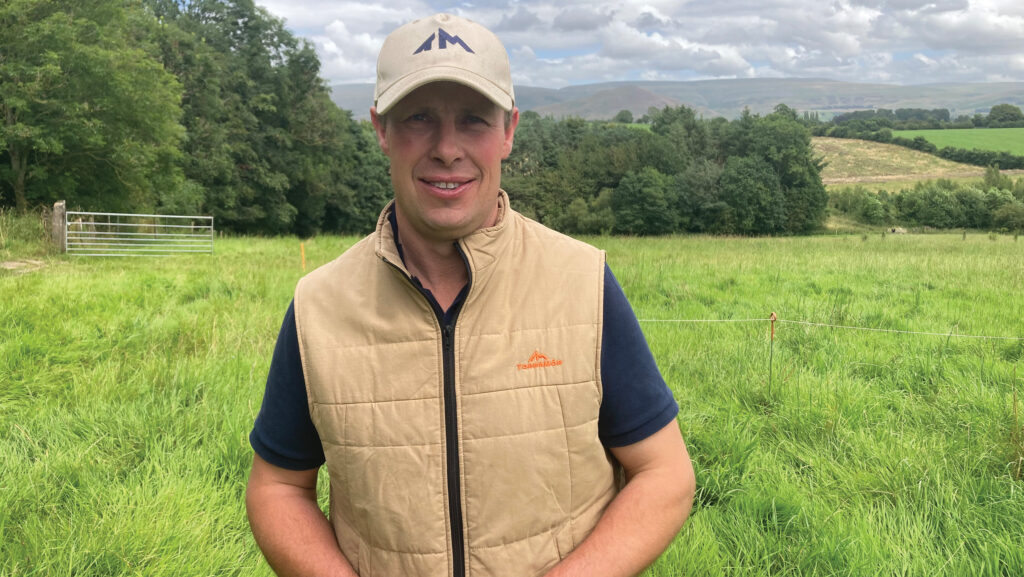7 tips on earthing an electric fence
 Fencing setup with three earthing roads © MAG/Michael Priestley
Fencing setup with three earthing roads © MAG/Michael Priestley When electric fencing equipment fails to do the job this is often caused by insufficient earthing of the system, according to a leading beef and sheep grazier.
Powerful energisers and high-quality equipment can often fail to pack a punch if they are not properly earthed, says Alex Brewster of Rotmell Farming.
Alex runs Powered Pasture, an electric fencing supply and advice business, as well as a 100% grass fed and finished beef and sheep unit near Pitlochry, Perthshire.
See also: How beef herd is delivering £350 a cow net profit with deferred, mob grazing
“A lot of problems with electric fencing systems relate to poor earthing, and there are some key bits of advice that can help,” he told mob-grazing enthusiasts at Carbon Calling, near Appleby-in-Westmorland, Cumbria (2-4 August).

Alex Brewster © MAG/Michael Priestley
Why earthing is important
An electric fence is an open circuit, with the electricity originating from the fence energiser and the current carried by the polywire.
When an animal touches the wire, the current flows through the animal down to the ground. The current then goes through the earth to the earth rod and back to the energiser.
The animal must feel an electric shock for the fence to be effective, and to do this, there has to be sufficient electrical flow back to the energiser.
“If you want to test a fence is working quickly, you can touch it with your hand, and to lessen the zap of the electricity, you can lift one foot off the floor. It delivers less of a thump because, in lifting a foot, you are reducing the earthing,” said Alex Brewster.
Alex gave the following tips for earthing a solar-powered system:
1. Get a voltmeter
- This is essential for diagnosing problems and setting up systems correctly.
- Available from most fencing suppliers.
2. Check the voltage
- Hold the voltmeter to the wire and take a reading.
- Is the system putting out what you would expect? Test the energiser and test the furthest part of the fence. If the voltage is 1,500 volts less than the energiser is putting into the wire, there could be an issue with the earthing.
- While walking round the fence, check the wire is tensioned properly and giving the desired voltage.
- If branches or plants are touching the wire, they will earth the voltage of the system and reduce its impact.
3. Earth the system
- Use earth rods made of steel (galvanised or stainless) or iron.
- Put a rod 1m into the ground near the energiser.
- For best results, aim for at least 1m of earth pole for 1J of power. A 2J system will typically require two earth poles at 2m.
- The number of earth stakes needed will also depend on soil moisture, which can vary seasonally or by soil type. Drier farms need more earthing rods.
- Connect the earth stakes in a row with one continuous plain wire. An insulated cable from the first earth stake is used to link back to the energiser earth terminal.
4. Test the earthing
- Use a voltmeter to test the voltage on the last earth stake. It should read less than 0.3kV and ideally as close to 0 as possible.
- If it is reading higher than 0.3kV, add another earth stake.
- To stress-test the efficiency of mains earthing systems, create a dead short on the electric fence line 100m or more from the energiser by laying an iron bar or gate across the wires in contact with the ground.
5. Source good wire
- Polywire has various qualities and price points – buying cheap stuff is a false economy.
- Ask for wire that has been woven, instead of wound, as it lasts longer and does not fray.
- Nine-strand braided woven wire is the best product on the market.
- Put more tension in the bottom wire(s) – too much tension in the top wire can distort the fence.
6. Know your power requirements
- Cattle can be controlled with 2,500V in the system, but 3,000V or more is better.
- For sheep, a minimum of 5,000V is generally needed to have sufficient influence over them – however, 8,000V may be needed to train them.
7. Review the requirements of the system
- Often people start off with an energiser and earthing system that works for a small-scale or experimental electric fencing project and a small weight of wire. Over the following seasons, the system covers bigger areas, and the energiser or earthing system may no longer be sufficient for the job.
- The type of grazing system can also affect requirements. What works for rotational grazing with covers up to 3,200kg dry matter/ha may not be suitable for more varied approaches – such as holistic-planned grazing, where some covers may be bigger. Longer grass draws amperage from the system, especially in wet conditions.
- An earth system that works well in winter may not be suitable in summer when the ground is drier, and grass covers are tall and carrying moisture.
